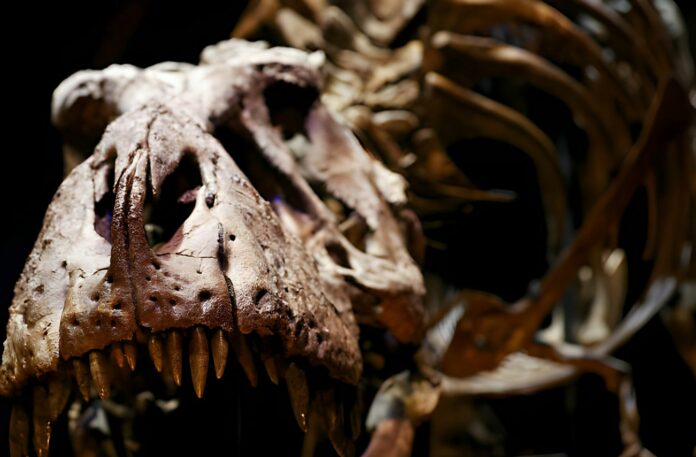New research published in Scientific Reports describes a new species of tyrannosaur from southern North America that may be the closest known cousin of Tyrannosaurus rex.
In a study published in Scientific Reports, Sebastian Dalman and colleagues introduce a newfound tyrannosaur species from southern North America, potentially the closest known relative of the iconic Tyrannosaurus rex.
Named Tyrannosaurus mcraeensis, this species was identified through the examination of a fossilized partial skull discovered in the Hall Lake Formation, New Mexico, USA.
The authors propose that these remains, despite being similar in size to those of Tyrannosaurus rex (which could reach a length of 12 meters), are actually from a new species as there are several small variations in the specimen’s skull bone shape and the joins between its bones and those of Tyrannosaurus rex.
Positioning the remains in the context of dated rocks and other dinosaur fossils—ranging from 66 to 75 million years old—the authors propose that T. mcraeensis likely thrived approximately 71 to 73 million years ago, predating T. rex by five to seven million years.
Intriguingly, the study suggests that T. mcraeensis may represent the closest known relative of T. rex, forming a sister species within the Tyrannosaurini lineage.
The researchers postulate a potential origin of the Tyrannosaurini lineage in southern Laramidia, an ancient island continent spanning from modern-day Alaska to Mexico between 100 and 66 million years ago.
Furthermore, the study proposes that, around 72 million years ago, the evolution of giant body sizes within the Tyrannosaurini lineage coincided with other colossal dinosaurs in southern Laramidia, including ceratopsians, hadrosaurs, and titanosaurs.
The authors speculate that the evolutionary shift towards giant tyrannosaurins might have been influenced by the considerable size of herbivores they preyed upon in southern Laramidia, unveiling a fascinating chapter in the ancient history of these formidable predators.
Source: 10.1038/s41598-023-47011-0
Image Credit: Dean Mouhtaropoulos/Getty Images
